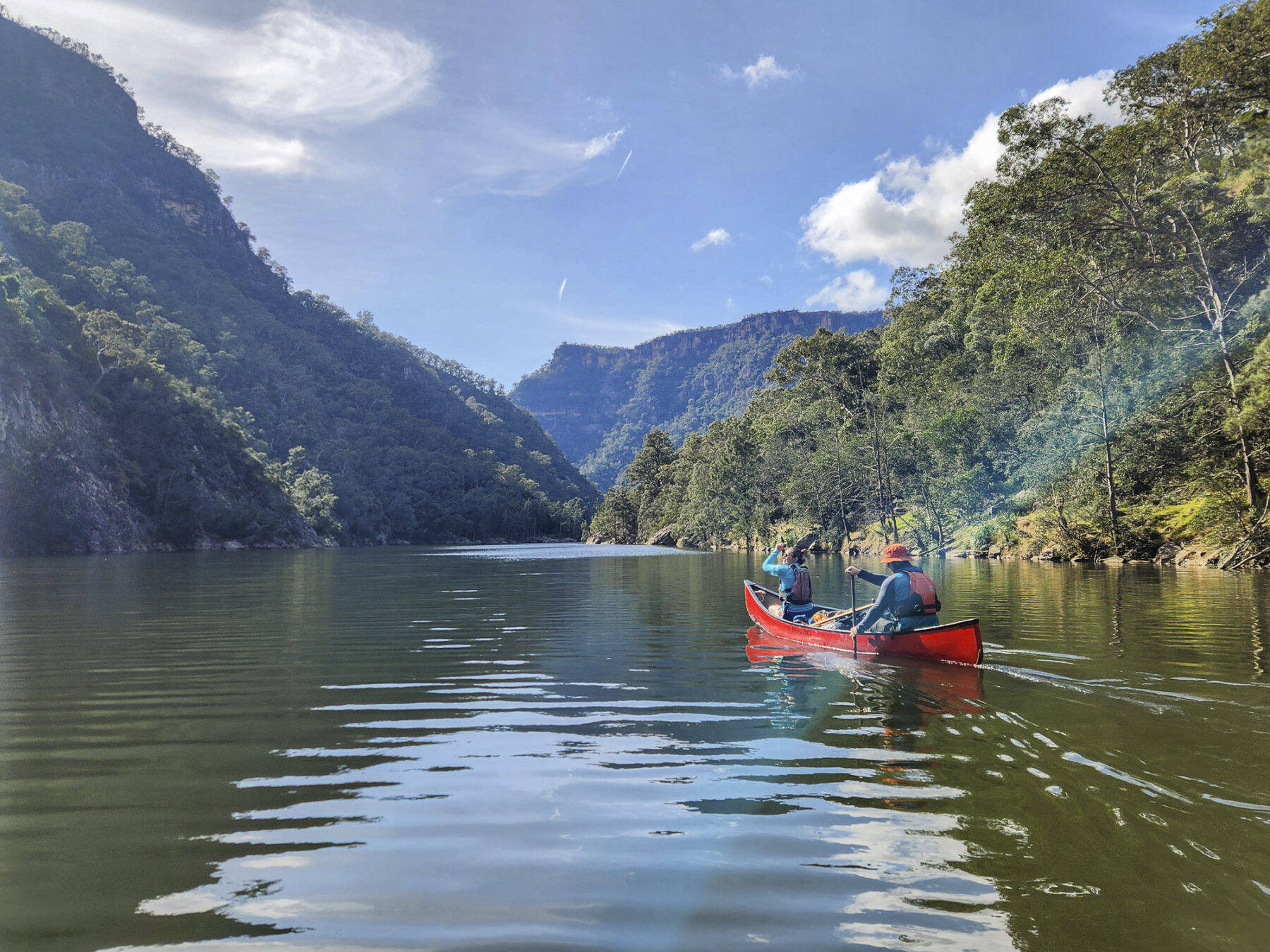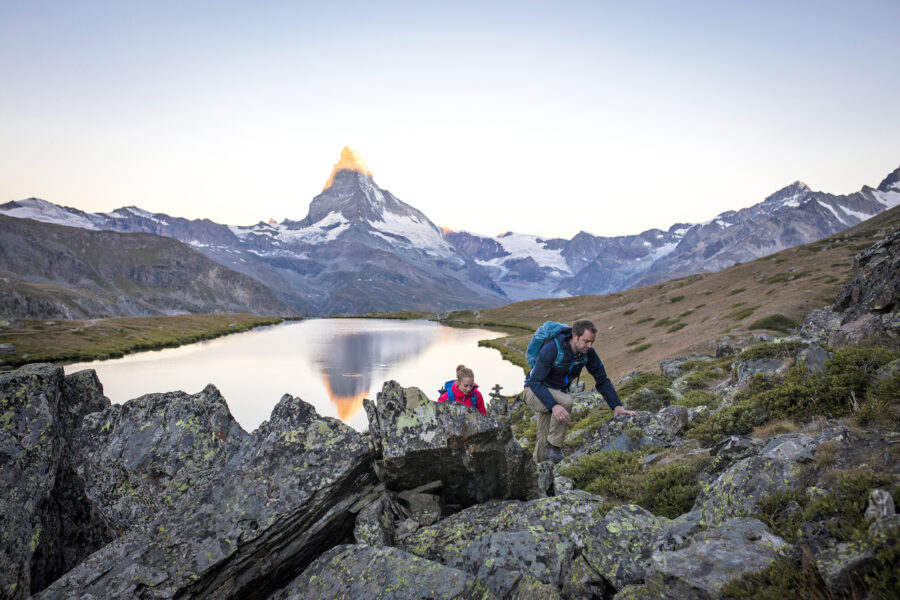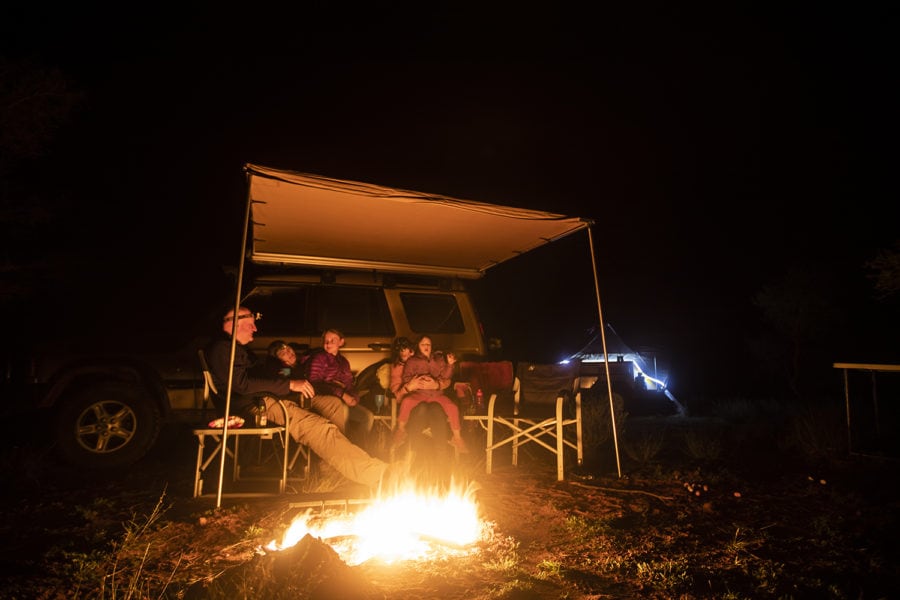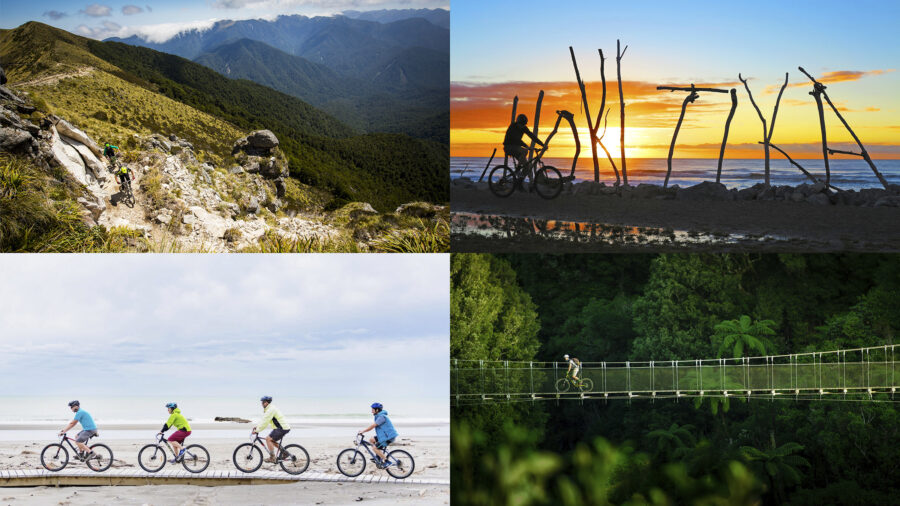The Canadian godfather of canoeing, Bill Mason, once famously said, “Anyone who says they like portaging is either a liar, or crazy. “Portaging a canoe is the act of carrying the canoe, and equipment, over land to either reach a destination or to avoid an obstacle. It’s not a task that many people relish but it is quite unique for a single person to carry a vessel that can accommodate four.”
Modern canoes and the art of portage
Many years ago, I began leading bushwalks into the Upper Shoalhaven River Gorge near Bungonia National Park. It was an incredible tease looking at such an enticing section of navigable whitewater river, knowing that it was so challenging to access as a paddler. The two ways to access this portion of the waterway involve either a multi-day high-grade paddling adventure from much further upstream, or a highly challenging portage involving 550m of descent on one of the hiking trails in the area. Wanting to purely experience this section from Bungonia to Tallowa Dam meant that my choice would involve the latter. Keep in mind that packrafts hadn’t yet become commercially available, so my mind pondered how to actually get a boat down to the river. In the years that followed I met people who told tales of determined paddlers rolling their way down with makeshift carts made of timber, and then burning the carts as they reached the river! This was a pretty novel idea, but the trip still remained on the back burner.
Fast-forward a few more years and I suddenly had access to canoes that were light enough to carry solo, and tough enough to survive whitewater! I really wanted to paddle that section in a proper traditional canoe. Packrafts had become a reality, and this is exactly the type of trip that they’re made for, but I’m a stubborn, die-hard canoe fanatic. Thankfully, I’m not alone…
The whisper of a dream
Daniel Rice is my mate, colleague, fitness inspiration, and also another canoe-junkie. He too used to regularly guide bushwalks in and around Bungonia and confessed to me that he also dreamed of carrying into, and paddling, that same section of river. Recently, when he told me that he was finally planning to do this exact trip with his girlfriend, Kaitlyn Gray, I was secretly filled with envy. When they invited me to come along, I was relieved, instantly committed, but suddenly a little bit apprehensive. Dan is 15 years my junior, makes time for personal adventures, and never skips leg day. Kaitlyn is the same, and I began to wonder if I still had the grit required to carry my boat and gear that far. I have no shortage of stubbornness and determination, and the chosen route called for a lot of both.
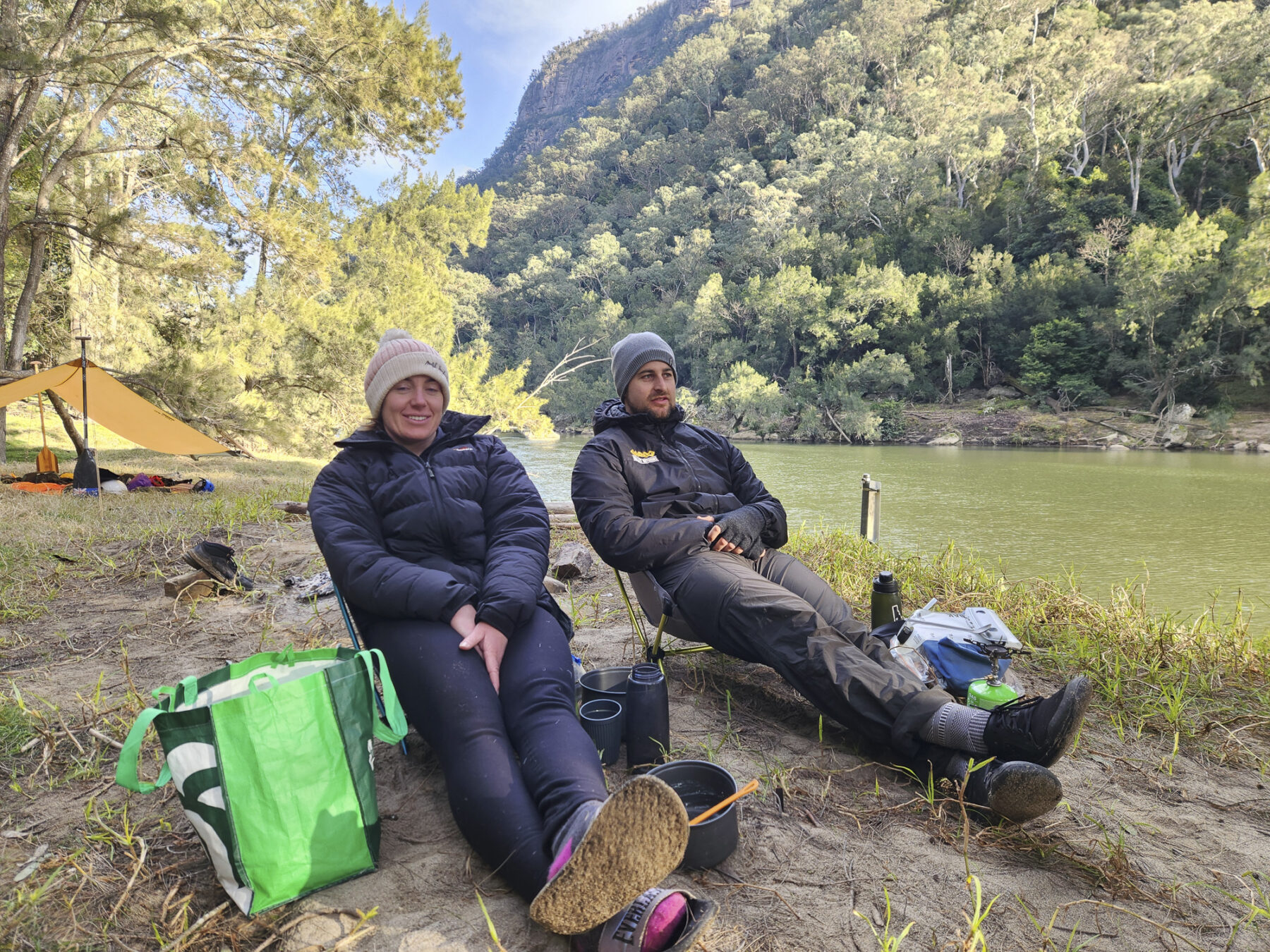
Dan made the call to enter via Long Point, a trailhead near Tallong, NSW, that’s about 3.6 km long and has 550m descent. It’s a narrow, winding, and rough footpath but isn’t overly steep in any particular sections like many of the other trails in the area. My plan was to paddle my 16-foot Prospector canoe and carry my own gear for the three days. Dan was also going to carry a 16-foot Prospector with his gear, and Kaitlyn was going to carry her personal equipment, their food, and all of our paddles.
Shouldering responsibility
We met early on a Friday morning and left a shuttle vehicle at the end-point which is Tallowa Dam, near Kangaroo Valley. Then we all drove together on the hour-long trip up to the Southern Highlands and out to the Long Point Lookout near Tallong. As we walked out to the lookout viewing area I felt a mixture of excitement and curiosity. Was I going to make the trip down as we’d planned to? Would I be forced to put the canoe down at some point and then have to make the rest of the journey in two trips? It was time to find out.
It’s a breathtaking view from that spot and the river looks so far below. All I could think about was how good it was going to feel to climb into the boat and start paddling in that gorgeous water. I walked back to the ute, put on my pack, draped a towel over my neck for some padding, and then slid the canoe off of the roof racks and onto my shoulders.
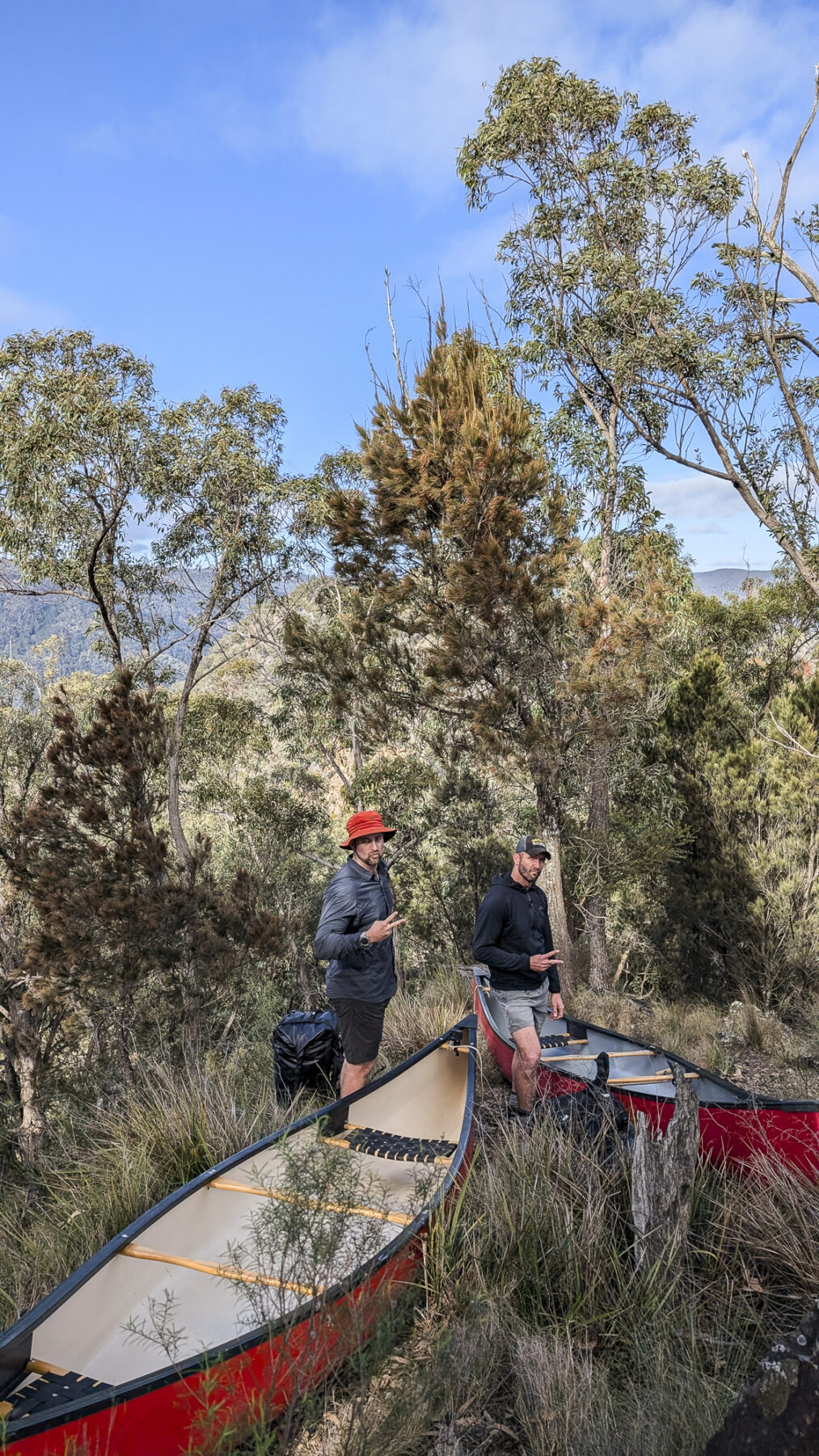
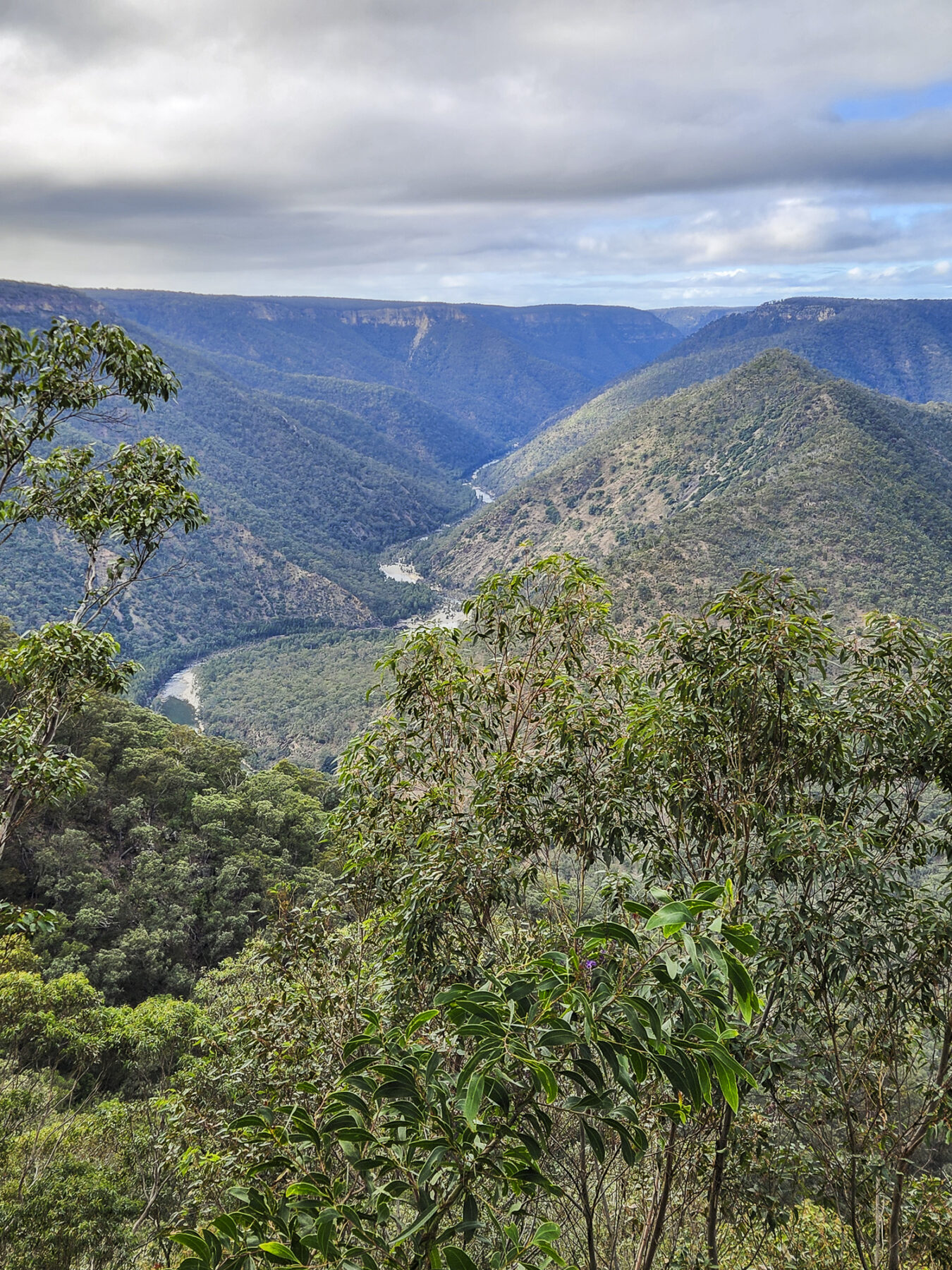
Traditional tandem canoes typically have a specially shaped crossbar, called a “yoke,” or a “carrying thwart,” positioned at the central balance point of the vessel. It’s designed to fit nicely around the back of your neck, on top of your trapezius muscles, to allow you to carry your canoe by yourself. When you wear the canoe, you’re supporting it on one side of the yoke which causes one end of the boat, the end behind you, to tilt down toward the ground. This allows you to see where you’re walking but, to compensate for this imbalance, you need to pull down slightly on the other end of the canoe in front of you. Carrying the canoe whilst wearing a pack helps to keep it on your shoulders, and tying a short rope to the front end of the canoe means that you can keep the leading end down by simply pulling the rope tight. Despite packing with lightweight bushwalking in mind, our packs felt quite heavy because they had to include a whitewater life jacket, helmet, paddling shoes, kneeling mat, sponge and bailer, throw-bag, and pin recovery kit. With a 32kg canoe and 20+ kg pack we realised we were each hauling close to 60kgs down into the gorge.
Walking the talk
The first few minutes of walking felt about as I had expected. My legs and my shoulders were both talking to me, but I figured that, in time, they’d both quiet down as the shock wore off. The flex and rebound of the yoke seemed to move the canoe up and down in harmony with the pack which meant that downward steps needed to be taken gently in order to avoid amplifying the strain on your thighs. In what felt like a cruel joke, the Long Point track actually contains a few uphill sections and most of them have stairs built into the trail. Climbing upstairs, when all you want to do is descend to the river, makes it twice as unpleasant. Thankfully, those sections are few and short-lived. As we walked along it became evident that there was no possible way that any sort of canoe cart would have worked on this particular trail. Carrying was the only option.
Dan and I carry canoes a LOT as part of our work, and this came in handy as a lot of spatial awareness was required on this track. Turning corners with a 16-foot boat on your head was often a multi-step process as the bow and stern of the canoe protrude nearly two metres fore and aft of where you’re positioned. Some of the switchbacks on the track required Kaitlyn to spot for us to let us know when we were clear of trees or shrubs that were catching the canoe. Any significant descents meant that the stern, or back, of the canoe would strike the ground if you didn’t anticipate this and pull down on the bow, or front of the canoe.

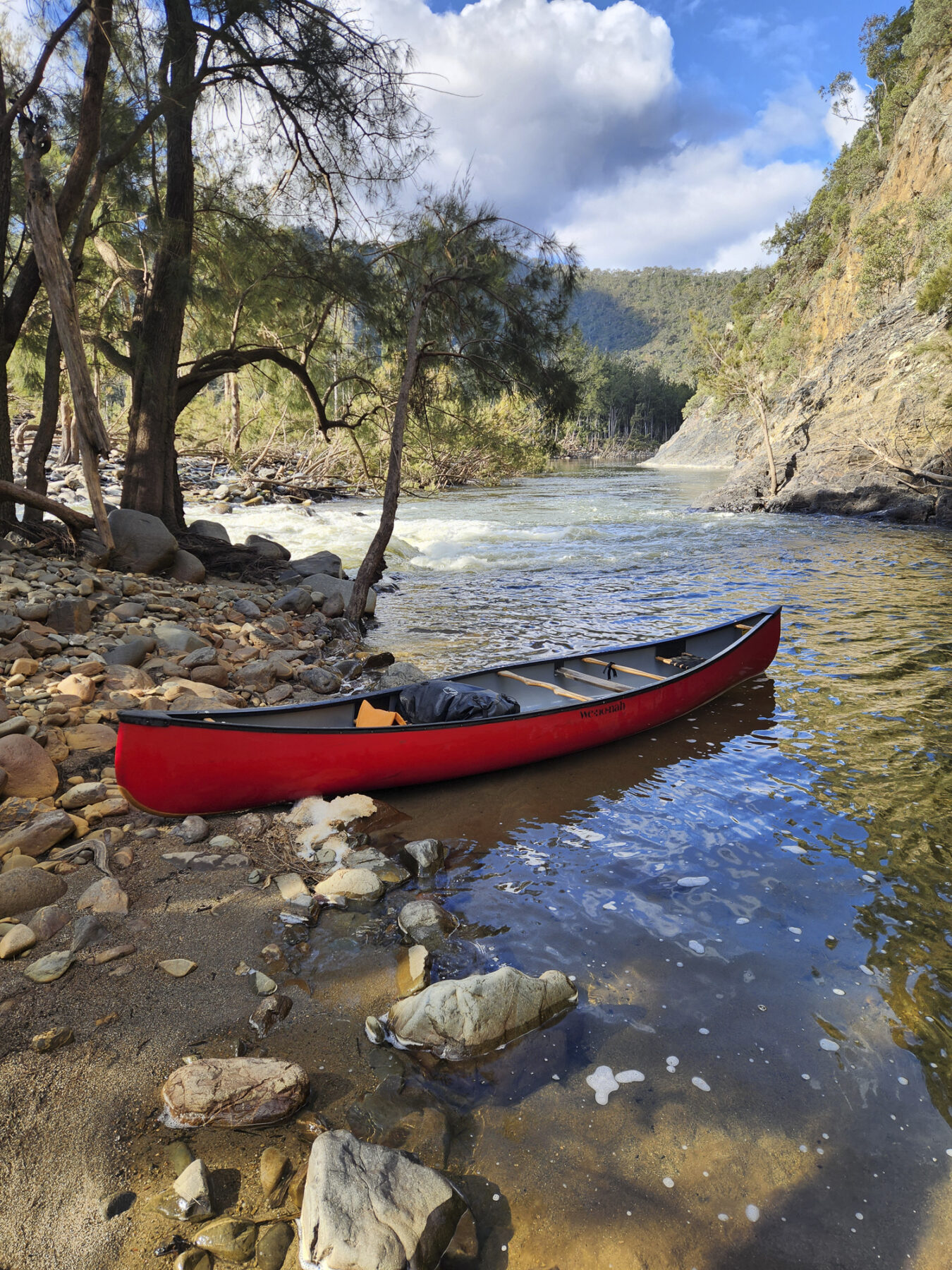
I got into a nice rhythm where I would walk until I felt like a rest, then count out 100 more double-step paces, and finally put the canoe down and take a quick break. In the first half of the portage this worked out pretty well, but by the second half of the descent there was often nowhere possible to stop as the trail became a narrow foot pad traversing some very steep terrain. When we finally hit the flat at the bottom of the mountain we had a celebratory lunch next to Barber’s Creek. It was incredibly challenging, and probably the weirdest portage I’ve ever completed, but I think I’d probably do it again… because the best was yet to come.
Water-borne at last
As anticipated, the feeling of slipping the boat onto the water and taking those first few strokes was just the best. The river level was a little bit lower than we’d hoped but we felt confident that it wouldn’t be a horribly bony experience. However, as we paddled up to the first rapid, there wasn’t even enough water on the approach to get to the top of it! Since Dan and Kaitlyn were in the tandem canoe together and I was nimbler on my own, I offered to scout ahead and see what the drop looked like. I found a small channel between the rocks and was able to manoeuvre myself through by hand until I could slip into the deeper flowing water and down the rapid.
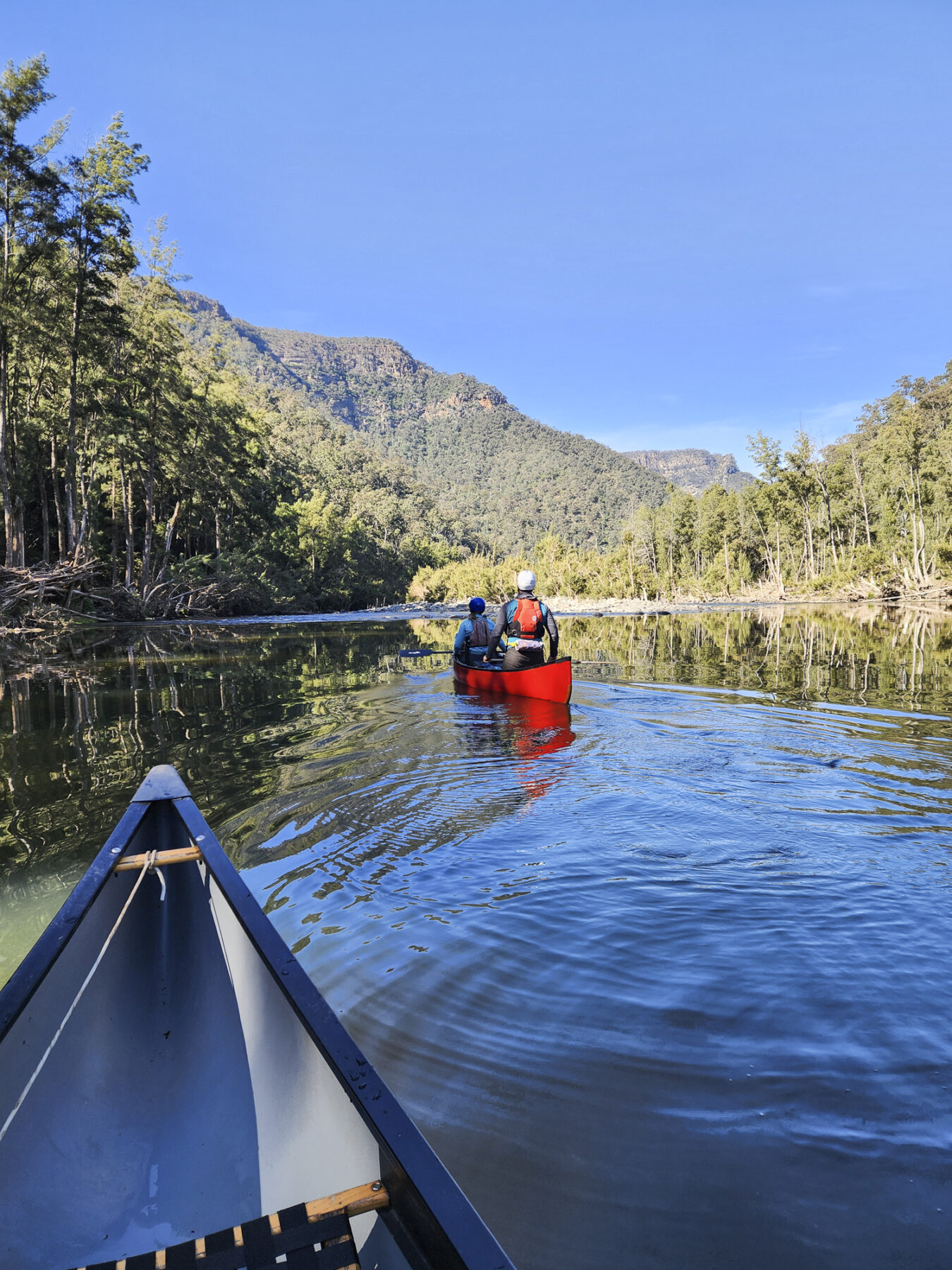
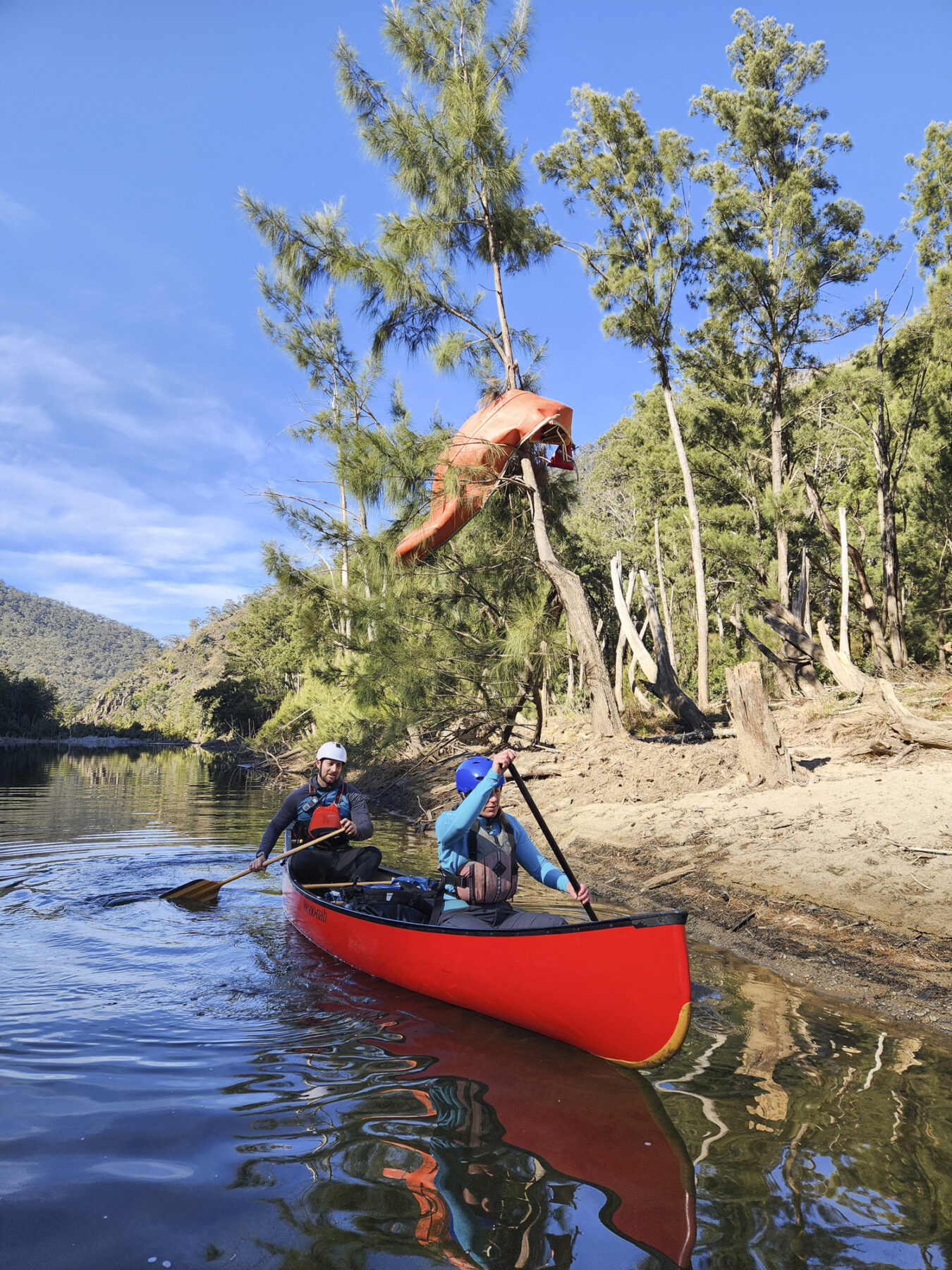
Once we were all past this first obstacle, we realised that this would be the only rapid where we had this problem, as the river had fanned out across multiple channels in only this spot. From there on out we had pretty decent depth and flow. We paddled about 4km, through numerous enjoyable rapids, until we’d found a lovely beach campsite for the night. The last rapid that we ran before camp was really fun and we were keen to portage back up and re-run it in the morning with empty boats! I slept out on a grassy flat just next to the beach in a bivy, and my reward was an incredibly clear sky and starry night with just a gentle breeze to keep the condensation to a minimum.
Dream weaving
I always sleep well when I can hear the sound of flowing water and that first night was no exception. I woke quite early, like a kid on Christmas morning, because I was so excited that I was about to see a section of the river that I’d not yet visited! Once we passed the walking track called Badgerys Spur, we would be going into territory that none of us had visited before. As planned, Dan and I each carried our boats back upstream so that we could re-run that rapid. Despite the soreness in my shoulders from carrying the boat again, it was worth it. After that, we loaded up and paddled away.
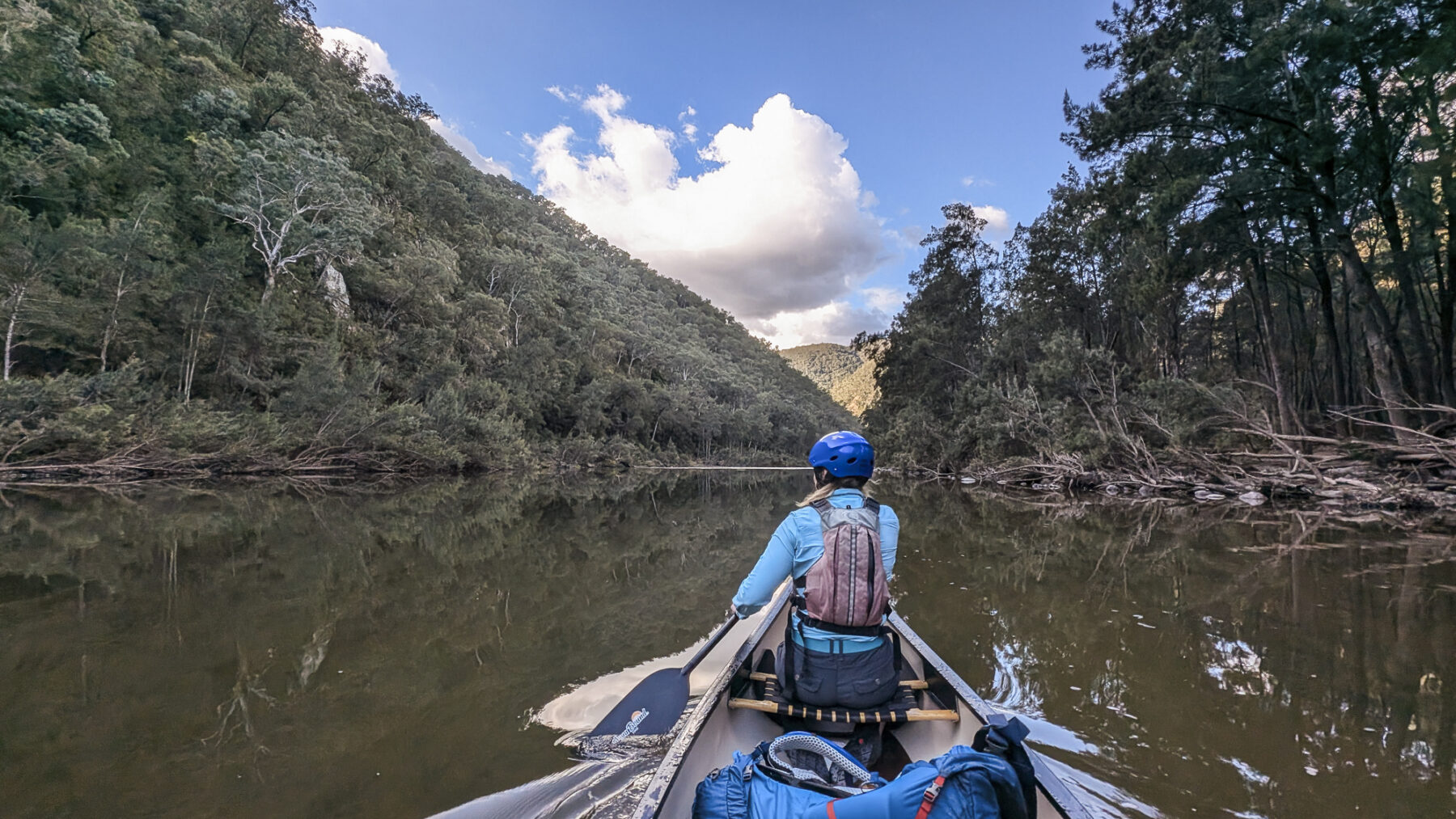
The valley was shrouded in a low fog which obscured the huge sandstone cliffs that are usually visible above. Still, with just the valley walls to observe, we felt really small and deeply held in this mighty gorge. The rapids were short and numerous, with each one providing a little rush of excitement as we manoeuvred through. Unlike the section of river below Tallowa Dam, this stretch contained very few long flat pools between rapids. We weren’t upset by this, as we knew that a 14km flat stretch was waiting for us at the end of our trip where the Shoalhaven River becomes temporarily impounded in the waters of Lake Yarrunga, held back by the Tallowa Dam.
Highs and lows
We cheered as we paddled past Badgerys Spur and looked forward to every new view around each corner. What struck me was how beautiful and resilient this section of the river is. Despite multiple recent flooding events, it still looked absolutely stunning with its luscious banks of native vegetation. We pulled up onto a perfect little crescent-shaped beach and enjoyed exploring the famous location called “Canoe Flat.” After a lengthy exploratory walk up Billy Bulloos Canyon we returned to the beach for lunch. The first rapid just after this spot was a bit of a tricky one with several sizable boulders parked in the flow. I clipped one that was very well obscured but recovered okay. Dan and Kaitlyn glanced off of a boulder which sent them off course and into the path of a bunch more. Their boat came to rest, side-on, against a rock. They did the right thing and leaned onto the rock, but the force was too strong, and it began filling their canoe from the upstream side. When I saw their bags floating up and out of the canoe, I knew they were in trouble. I paddled back up to help them, but they’d managed to sort it out on their own, which was amazing because a pinned boat in a location this remote could be a major problem.
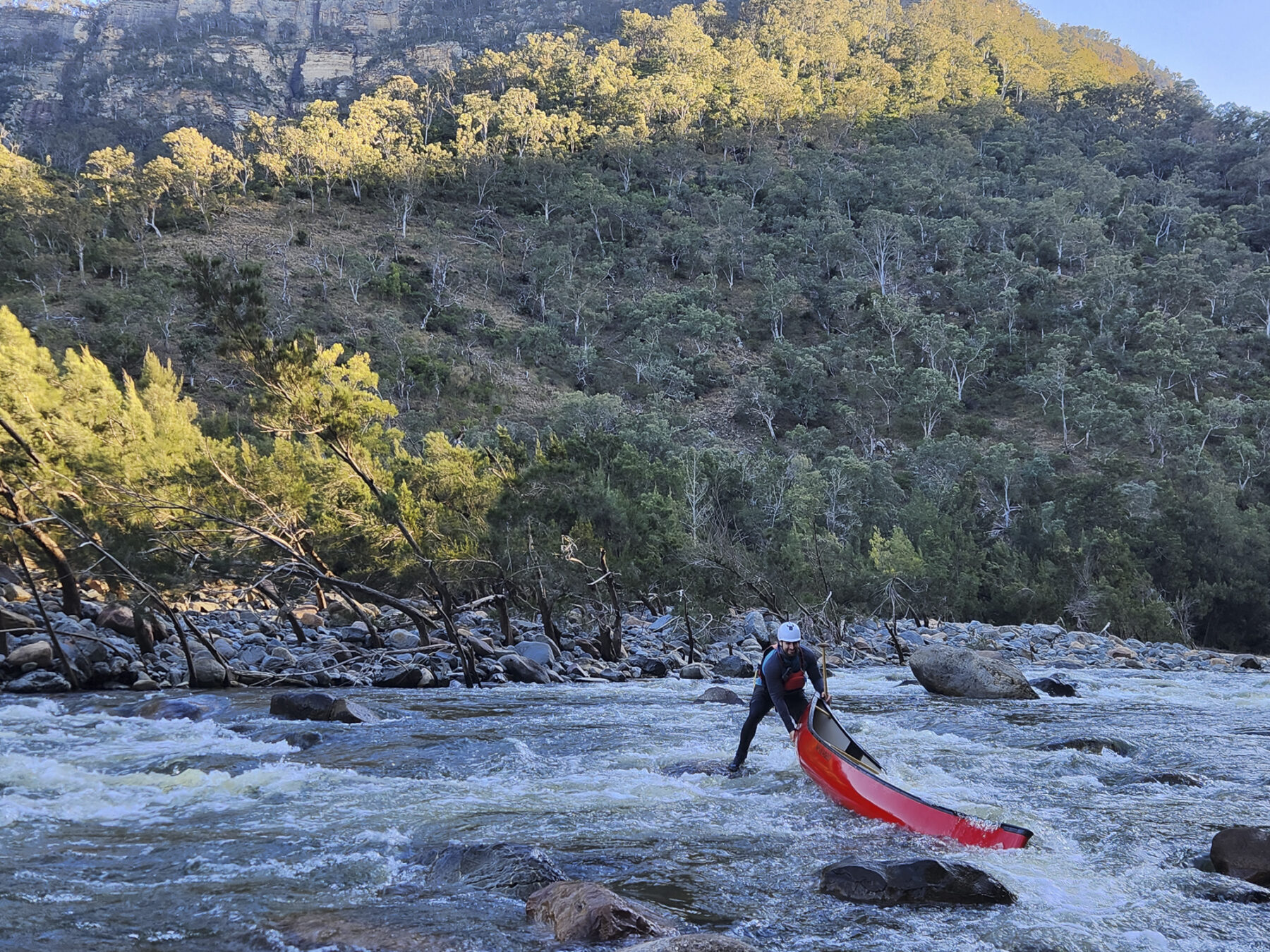
It’s worth noting that this section of river is not ideal for novice paddlers, given its remoteness and technical nature. As we reflected on our good fortune, we were graced by one of the most surreal sunsets imaginable. We didn’t actually see the sun, but instead we saw the sandstone cliff tops glowing red with the reflection from its setting. As we paddled past Fossickers Flat we knew that the last of the rapids were just ahead. Once through them, we settled into the calmness of the flat water as we approached our last campsite.
That sense of achievement
We awoke to the most stunning and clear morning. The sunrise took its time to reach us deep in the gorge, but we could see it on the cliff tops as we headed for home. The 14km of flat water paddling through the incredible Upper Shoalhaven Gorge was no chore at all and made me thankful to be in a full-sized canoe.
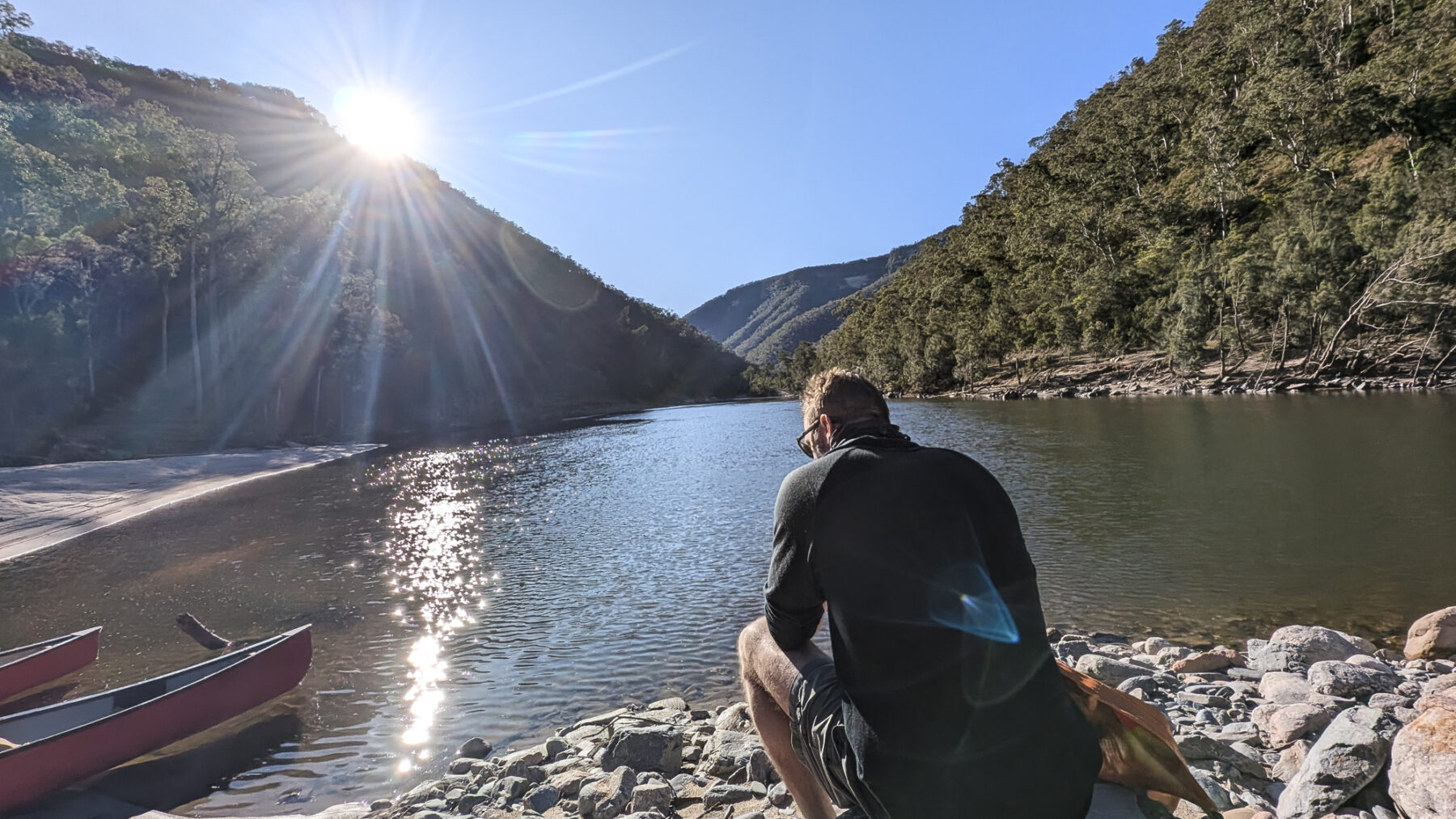
Re-emerging from the wilderness brought a huge sense of achievement: The trip that I’d been dreaming of for so long had finally been completed and, overall, it was even more rewarding and enjoyable than I could’ve imagined.
